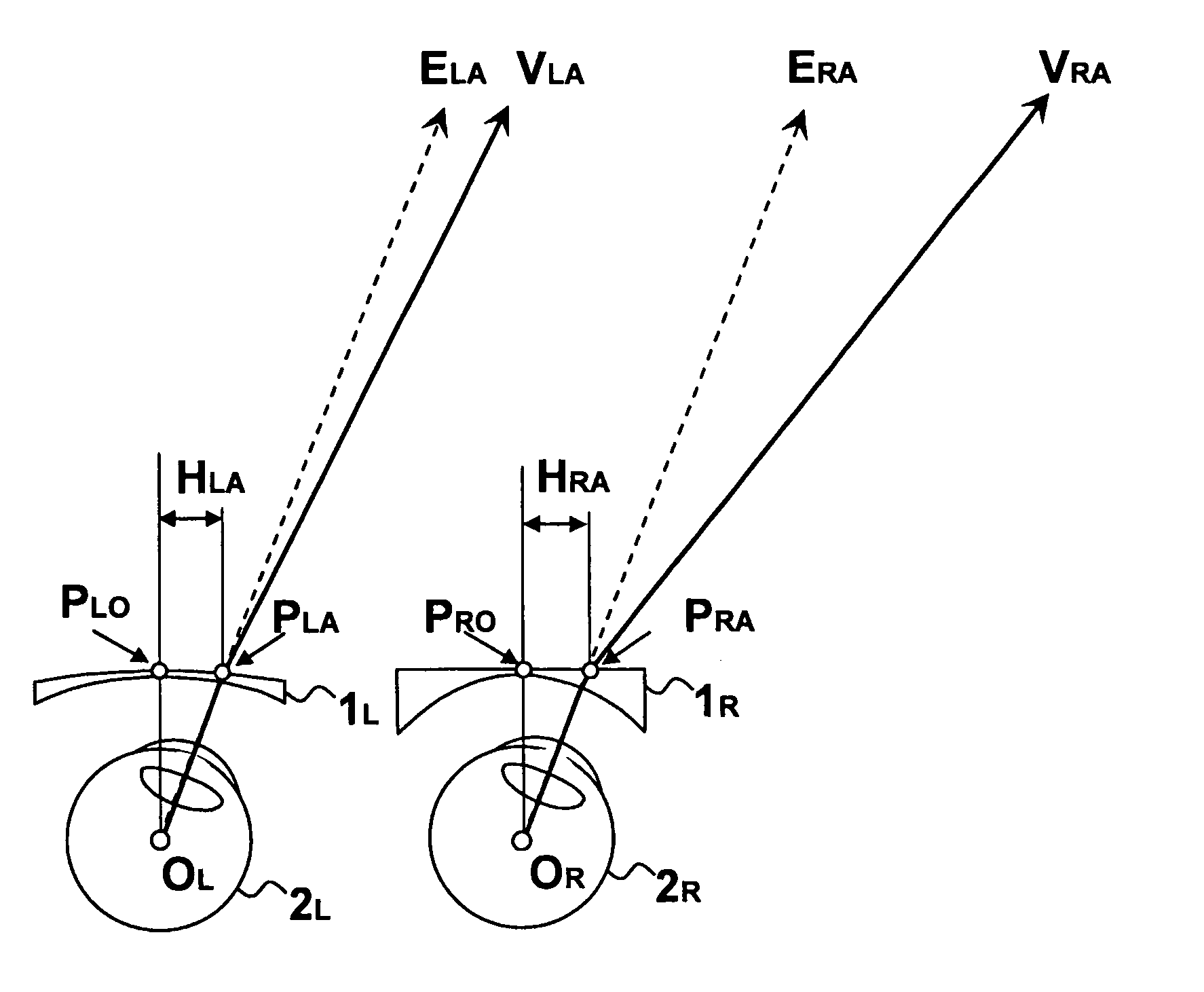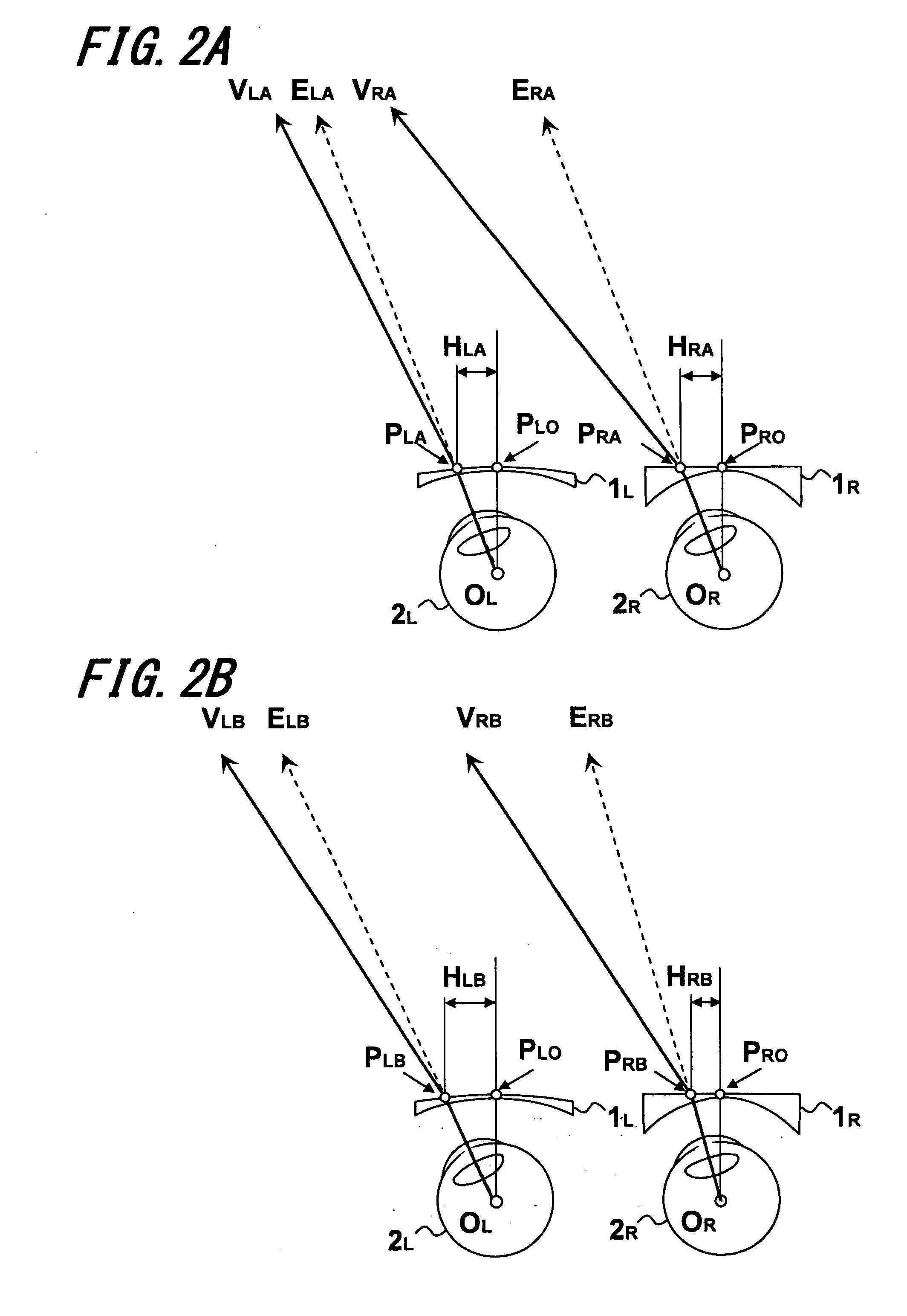Pair of progressive power lens and method for designing same
a technology of progressive power lenses and power lenses, applied in the field of progressive power lenses, can solve the problems of extreme binocular vision functions of right and left eyes, wearers to feel distortion or sway of images, and inconvenience of binocular vision in intermediate vision,
- Summary
- Abstract
- Description
- Claims
- Application Information
AI Technical Summary
Benefits of technology
Problems solved by technology
Method used
Image
Examples
first embodiment
[1] First Embodiment
[0105]First, a description will be given to Examples 1 to 3 as examples of not including cylindrical dioptric power in the distance dioptric power as a first embodiment of the present invention.
[0106]Table 1 is a list showing right and left distance dioptric powers and results of obtaining a ratio of amounts of displacement of lines of sight caused by the power difference thereof in Example 1 to Example 3 of the present invention.
[0107]The reference characters and indications in Table will be described. It should be noted that the reference characters shown in FIGS. 1B, 2B . . . and 8B illustrating situations in which a person who wears spectacles is actually forced to converge, diverge, or the like are used for the reference characters described below.
[0108]A reference character DL means left distance dioptric power (dioptre), a reference character DR means right distance dioptric power (dioptre), and a reference character DC means reference dioptric power (diop...
example 1
(1) Example 1
[0115]As shown in Table 1, Example 1 is progressive power lenses having distance dioptric power for the right eye with more minus dioptric power compared with the left eye.
[0116]FIG. 1B is a diagram of a situation where a person who wears the pair of progressive power lenses of Example 1 views a side on the right in the distance with both eyes, viewed from overhead of the wearer.
[0117]The situation is as described above, and a state is illustrated in which the wearer viewing a distance is forced to converge in spite of not being accompanied by accommodation strain.
[0118]Here, a description will be given to a method for calculating the “adjustment ratios” required to correct the design (average dioptric power distribution and astigmatism distribution) of the progressive power lenses in conventional techniques according to the present invention.
[0119]A method is shown as an example in which a relational expression of the amount HLB of left eye displacement and the amount ...
example 2
(2) Example 2
[0186]Example 2 is an example using a design approach similar to Example 1, in which the progressive power lens for the right eye has a stronger minus dioptric power than that for the left eye.
PUM
 Login to View More
Login to View More Abstract
Description
Claims
Application Information
 Login to View More
Login to View More - R&D
- Intellectual Property
- Life Sciences
- Materials
- Tech Scout
- Unparalleled Data Quality
- Higher Quality Content
- 60% Fewer Hallucinations
Browse by: Latest US Patents, China's latest patents, Technical Efficacy Thesaurus, Application Domain, Technology Topic, Popular Technical Reports.
© 2025 PatSnap. All rights reserved.Legal|Privacy policy|Modern Slavery Act Transparency Statement|Sitemap|About US| Contact US: help@patsnap.com



